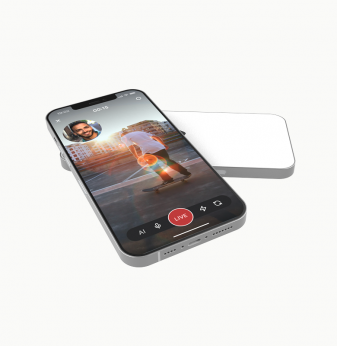How We Improve OTT Product Stability Without Modifying the Core Platform

Stability is everything in today’s OTT ecosystem. Buffering issues, app crashes, unresponsive interfaces — these aren't just technical hiccups. They’re dealbreakers for users and threats to brand reputation. Yet, many vendors are stuck: they don’t have access to modify the core of Android TV, Tizen, or WebOS platforms — or they simply don’t want to risk breaking certification or voiding warranties.
So how do you improve stability when you can’t change the platform?
At Promwad, we’ve spent years helping clients tackle this exact challenge. In this article, we’ll explore how embedded expertise and QA infrastructure can make OTT apps more stable — without altering the platform itself.
The Core Problem: Limited Control, High Expectations
Most OTT services run on Smart TVs, set-top boxes, or streaming dongles powered by Android TV, Tizen, or WebOS. These platforms are robust but closed — especially when provided as binaries by TV manufacturers or chipset vendors.
That means developers and integrators can’t just tweak the kernel or patch a media player component. And yet, they’re expected to:
- Prevent frame drops on low-bandwidth connections
- Ensure consistent playback across different chipsets
- Avoid memory leaks that degrade UX over time
- Handle network fluctuations gracefully
- Deliver smooth updates without regressions
To achieve these goals, stability needs to be engineered around the platform, not inside it.
Strategy #1: QA Infrastructure at the Edge
One of the most powerful tools for stability is visibility. If you can’t change the system, you can at least observe it with precision.
We help clients build custom QA infrastructures that:
- Log real-time app crashes and memory usage
- Monitor CPU load and thermals across playback sessions
- Analyze input latency and responsiveness
- Detect anomalies like stuttering or frame loss
- Feed logs to cloud dashboards via lightweight MQTT or HTTP clients
This lightweight instrumentation is often embedded as a sidecar process, running alongside the main application, fully compliant with platform guidelines.
Strategy #2: Watchdog Mechanisms & Recovery
You don’t always need to fix the root cause in code — sometimes it’s enough to catch the failure and recover from it gracefully.
We implement embedded watchdogs that:
- Automatically restart hung video pipelines
- Clear app-level cache to recover from memory leaks
- Reboot system services if they become unresponsive
- Notify developers via secure logging channels
This approach is particularly useful on budget STBs or older Smart TVs where hardware limitations make true performance tuning impossible.
Strategy #3: Resource Optimization without Root Access
Without touching the platform, we can still optimize the use of memory, CPU, and GPU resources by working through:
- Media SDK configurations (buffer sizes, decoder priorities)
- Adaptive bitrate logic tuning
- App-level threading optimization
- Frame prefetching for smoother rendering
While these changes aren’t technically “embedded,” they require a strong understanding of how embedded systems behave under resource constraints — and how to tune them without breaking sandbox limitations.
Strategy #4: Modular Middleware Bridges
For clients operating across multiple devices and platforms, we develop modular middleware components that:
- Normalize platform-specific differences in media handling
- Abstract DRM, subtitle rendering, and stream handling
- Provide fallback logic for broken or inconsistent APIs
- Integrate custom QA triggers without needing deep platform access
This means a single logic block can be deployed across Android TV, WebOS, and even AOSP-based hybrid platforms, without branching codebases or maintaining separate test suites.

Real-World Example: Stability Boost on Budget OTT Devices
A recent client launched a white-label OTT solution on Android TV-based boxes from two different vendors. The app showed excellent performance in QA but began to crash intermittently in real-world conditions.
Instead of changing the firmware (which was locked by the vendor), we introduced:
- A lightweight embedded monitor that reported device state every 10 seconds
- Automated log capture and crash analytics
- A memory watchdog that restarted the media player if usage exceeded thresholds
The result? 30% fewer user-reported issues in the first 60 days — without a single change to the platform image.
When to Use This Approach
Enhancing OTT stability without changing the platform makes sense when:
- You rely on third-party or OEM-provided firmware
- Platform certification or branding must remain untouched
- Time-to-market constraints prevent deeper changes
- Stability issues are real but hard to isolate in testing
- You need portable solutions that scale across devices
What It Takes
This strategy requires a blend of:
- Embedded system expertise (to understand hardware limits)
- OTT domain knowledge (to profile typical bottlenecks)
- QA automation engineering (to build observability and triggers)
- Compliance understanding (to stay within platform rules)
It’s not just debugging — it’s engineering a resilient runtime environment from the outside in.
Final Thoughts
You don’t need root access to make your OTT product stable. With the right tools, embedded knowledge, and smart QA infrastructure, it’s possible to dramatically reduce crashes and playback issues — even when the core platform is off-limits.
At Promwad, we help media and OTT companies engineer reliable products on Android TV, Tizen, WebOS, and hybrid platforms. If your team is fighting platform-level instability but can't touch the platform — let’s talk. Sometimes, the fix isn’t inside the code. It’s in how you build around it.
Our Case Studies






